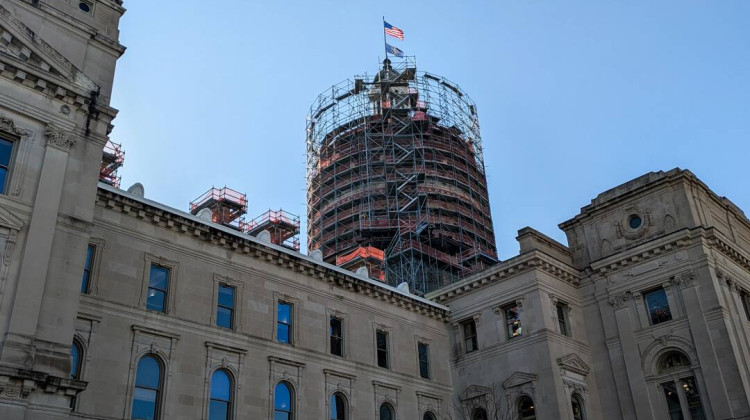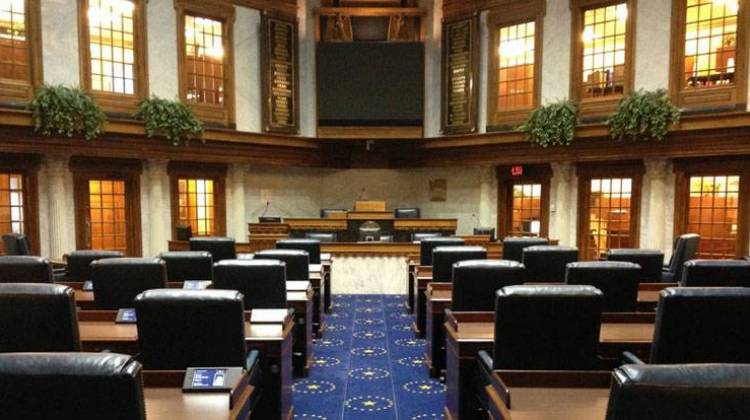
Equipment used to pump cement to fill an abandoned well. (Phil Strack/Provided by Franklin Well Services) WELL MAP: A map shows current oil, gas and gas storage wells in Indiana. There are more than 1,000 such wells in the state.
Screenshot of igws.indiana.edu/PDMS/Map/Funding from the federal infrastructure law has allowed Indiana to address more abandoned oil and gas wells than ever before.
These are old wells that could be leaking oil, natural gas, or salt water into the environment — potentially polluting public drinking water supplies, harming livestock, and impeding agriculture and other land uses. A report by Inside Climate News also suggests abandoned wells could emit cancer-causing chemicals and greenhouse gases.
Last year, Indiana received $25 million to plug abandoned wells, 100 times as much as the state Department of Natural Resources’ typical annual budget for these projects. And the agency is almost through that money already. Since the grant was awarded, 200 wells have been plugged and about 360 more are set to be done by the end of next year.

DNR Orphan Well Manager Brian Royer said before getting the grant, the state would plug between 15 to 20 wells a year.
Today, oil and gas well operators pay annual fees that go into a fund to address abandoned wells and are required to close wells properly. But Royer said most of the abandoned wells in Indiana are from before its permitting program was set up — some of them go as far back as the early 1900s.
“A lot of wells that were from that period that we just don't have owners and operators that were ever viable and on the hook," he said.
Royer said the state hopes to apply for more than $30 million in additional federal grants. With that funding, he said the DNR might be able to address most of the remaining abandoned wells in the state.
Brandi Stennett is the regulatory compliance manager for Pioneer Oil Company as well as Franklin Well Services — a company the state pays to plug abandoned wells. She said working on these old wells can be a challenge.
“We've had to go out with metal detectors, do some excavating and do our research before we get there," Stennett said.
Stennett said fortunately, with the help of landowners, they’ve been pretty successful — many of them are farmers who have passed down land for generations. She said since the state received the grant, the company has been able to hire two more staff members to their small team.
Join the conversation and sign up for the Indiana Two-Way. Text "Indiana" to 73224. Your comments and questions in response to our weekly text help us find the answers you need on statewide issues, including this series on climate change and solutions.
Another contractor for the state, R&S Drilling, was also able to hire employees as a result of more business from the federal grant.
Sandra Racer is the office manager for the company. She said they were able to hire temporary employees to help them get more work done when the weather is good and farmers are done with harvests.
Racer said landowners need to know that many of these abandoned wells can’t be used again.
“So the most probably encouraging thing would be to let those people know that if there is a well on their property, now is the time to get that well plugged with it being paid for with the federal dollars," she said.
Some landowners might not know they have an abandoned well on their property. The DNR said to look for areas with distressed plants, where the ground has caved in, or that smells like natural gas or crude oil.
Rebecca is our energy and environment reporter. Contact her at rthiele@iu.edu or follow her on Twitter at @beckythiele.
9(MDAyMzk1MzA4MDE2MjY3OTY1MjM5ZDJjYQ000))
 DONATE
DONATE






 Support WFYI. We can't do it without you.
Support WFYI. We can't do it without you.